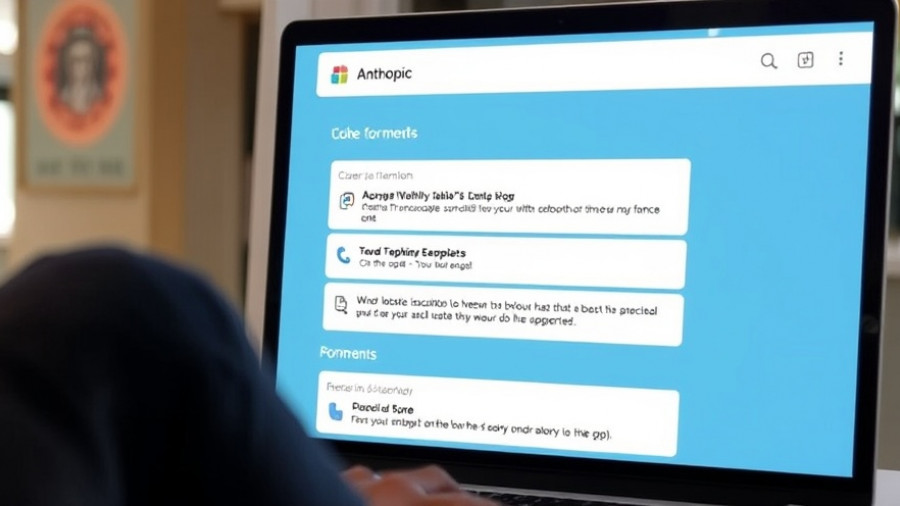
OpenAI’s GPT-5 Codex Model: A Game Changer for Coding Automation
OpenAI's latest release, the GPT-5 Codex model, is poised to revolutionize the coding landscape, making it more accessible and efficient for developers of all skill levels. This innovative model is gradually being integrated into various platforms such as the Terminal, IDE extension, and Codex Web, allowing users to automate their coding-related tasks effectively.
Understanding Codex: The AI Programming Assistant
Codex has already established itself as a valuable tool for programmers, enabling users to execute complex code with minimal effort. The unique selling point of Codex lies in its 'vibe code' feature, which facilitates coding even for those with no programming background. This starkly contrasts with traditional methods, wherein a good understanding of programming languages was essential for even basic tasks.
How GPT-5 Codex Compares to Claude Code
Despite its strengths, GPT-5 Codex has been initially compared to Claude Code, the leading AI in the coding domain. While Claude manages to maintain a competitive edge, early evaluations show promising improvements from OpenAI's new model. The GPT-5 Codex model boasts a success rate of 74.5% on the SWE-bench Verified benchmark, a significant improvement credited to refined algorithms and data training methodologies.
Enhancements in Code Refactoring: A Major Leap Forward
Among the remarkable enhancements in the GPT-5 Codex model is its performance in code refactoring evaluations. Previous models, including standard GPT-5, achieved a success rate of just 33.9%. In stark contrast, the GPT-5 Codex model improved this figure to 51.3%, showcasing how much thought has gone into making this model more operationally effective.
The Future of AI Coding-Solutions
As the rollout continues, users are eager to see how the new model can further bridge the gap in automation and programming expertise. With the anticipated completion of Codex's rollout in the coming days, OpenAI expects widespread adoption among programmers and tech enthusiasts alike, which could lead to a fundamental shift in how coding tasks are approached across industries.
Key Considerations for Users: What to Expect
For both seasoned developers and novices, understanding the capabilities and limitations of GPT-5 Codex is crucial. Users should be mindful of the learning curve involved in utilizing AI coding assistants effectively and recognize the model's strengths in automating repetitive tasks. This applies particularly to sectors like technology startups, where efficiency can dictate a project's success.
Potential Impact on the Software Development Industry
As automation becomes more ingrained in coding practices, industries across the board will likely feel the impact. Rapid prototyping, faster deployment times, and more reliable code will redefine workflows in technology companies. This shift may lead to the restructuring of developer roles, with a greater focus on creative problem-solving rather than purely technical skills.
Common Misconceptions About AI in Coding
One prevalent myth about using AI models in coding is that they will replace human developers. In reality, GPT-5 Codex and similar tools are designed to complement human expertise rather than substitute it. Proper integration of AI into development workflows can enhance productivity, reduce errors, and ultimately lead to more innovative solutions.
Conclusion: Embracing the Evolution of Coding
As the rollout of the GPT-5 Codex model draws closer, its potential to transform how developers approach coding tasks cannot be overstated. Users are encouraged to explore this new tool, embrace the changes it brings, and adapt their skills accordingly in an ever-evolving tech landscape. Stay tuned for further developments in the AI coding space, as tools like Codex continue to advance, making coding more accessible to everyone.
 Add Row
Add Row  Add
Add 




Write A Comment